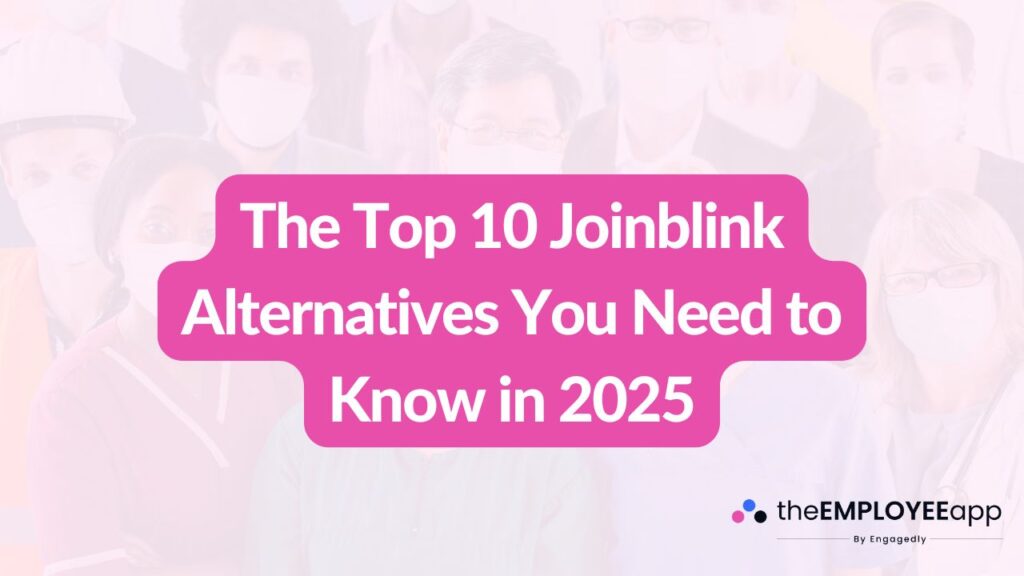
Internal communication tools have become the backbone of modern organizations, especially as workplaces become more dispersed and employees rely on digital platforms to stay connected. Joinblink has emerged as a strong solution in this space, offering intranet and employee communication capabilities to streamline workflows. However, no single platform works for every organization.
Some companies may need more advanced analytics, deeper integrations with existing HR or productivity systems, or a tool that better serves frontline and deskless employees. Others might be looking for a more cost-effective solution or an all-in-one platform that consolidates multiple employee experience needs into one.
This article explores the top 10 Joinblink alternatives in 2025 to help organizations choose the right platform for their unique workforce dynamics.
While Joinblink offers a flexible employee intranet and communication platform, businesses may search for alternatives for several reasons:
Need for more robust frontline communication features.
Desire for stronger integration with HRIS or collaboration tools.
Requirement for advanced employee engagement and analytics.
Budget constraints and search for cost-effective options.
Preference for platforms with a social, mobile-first experience.
With the internal communications space rapidly evolving, numerous solutions now compete with Joinblink, each bringing its own strengths to the table.
When reviewing Joinblink alternatives, we’ll evaluate platforms across key dimensions:
Features
Internal communications tools (news feeds, announcements, messaging).
Employee engagement (surveys, recognition, feedback loops).
Mobile accessibility for deskless and frontline staff.
Intranet and knowledge-sharing hubs.
Analytics and reporting to measure communication impact.
Integrations with HR and productivity platforms.
User Experience
Ease of use and intuitive design.
Mobile-first accessibility.
Customization for branding and workflows.
Support and onboarding resources.
Unique Selling Points (USPs)
Standout features that solve specific organizational challenges.
Reputation and customer adoption.
Differentiation in approach, functionality, or employee experience.
By evaluating platforms through these criteria, companies can make an informed choice to meet their communication and engagement needs.
Before we dive into the list, it’s important to remember that choosing an internal communication platform isn’t just about features—it’s about fit. The right solution will depend on your workforce makeup, organizational culture, and long-term business goals. Whether you’re aiming to engage deskless employees, strengthen organizational alignment, or provide a central hub for knowledge sharing, there’s a platform that matches your needs.
Let’s explore the 10 best Joinblink alternatives in 2025.
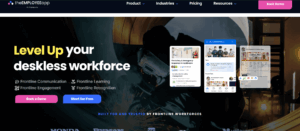
theEMPLOYEEapp is a mobile-first communication platform purpose-built for frontline and deskless employees. Unlike many tools designed primarily for office workers, TheEmployeeApp ensures that critical information reaches employees who don’t sit at desks or have regular access to email. This makes it a standout choice for industries like retail, healthcare, hospitality, logistics, and manufacturing.
Mobile News Feed: Deliver company updates instantly through push notifications to ensure employees never miss important messages.
Document Sharing: Distribute policies, schedules, safety protocols, and training resources in one centralized hub.
Surveys and Polls: Capture real-time employee sentiment and feedback.
Event Management: Share upcoming events, training sessions, and opportunities with RSVP capabilities.
Secure Messaging: Role-based access controls ensure sensitive communication is shared securely.
Integrations: Connect with HRIS and productivity tools for seamless workflows.
TheEmployeeApp’s intuitive mobile interface is designed to minimize training and maximize adoption. With a clean, straightforward design, frontline workers can easily access the information they need. Its mobile-first approach ensures inclusivity for employees who might otherwise be left out of digital communication channels.
TheEmployeeApp’s greatest strength lies in its exclusive focus on frontline communication. While many competitors offer intranet and engagement features for desk-based staff, this platform bridges the gap to reach every employee, regardless of their role or location. For organizations that cannot afford communication breakdowns on the frontline, TheEmployeeApp is one of the most impactful alternatives to Joinblink.
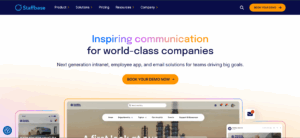
Staffbase is a leading employee communications platform that combines intranet, employee apps, and branded communication solutions.
Key Features
Company-branded mobile apps and intranet portals.
Targeted messaging by role or department.
Employee engagement surveys and analytics.
Integration with Microsoft 365 and HR systems.
USP
Staffbase stands out for its enterprise-grade scalability and branding flexibility, making it a strong choice for large, distributed organizations.
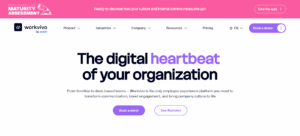
Workvivo blends internal communications with social engagement, creating a familiar, social media-style experience for employees.
Key Features
Social feeds for announcements and updates.
Recognition tools for celebrating achievements.
Polls, surveys, and employee feedback.
Integrations with Slack, Teams, and Zoom.
USP
Its social-first design boosts adoption by making communication feel more engaging and interactive.
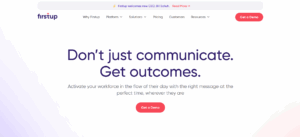
FirstUp (formerly SocialChorus) is an employee experience platform designed for personalized communication across multiple channels.
Key Features
Personalized, AI-driven content delivery.
Push notifications and mobile app access.
Advanced analytics on communication reach.
Multi-channel delivery (email, mobile, signage, and more).
USP
Its personalization engine ensures employees only receive the most relevant messages, improving engagement and reducing noise.
Beekeeper is purpose-built for frontline workforces, offering mobile-first communication and collaboration tools.
Key Features
Mobile chat and company announcements.
Shift scheduling and task management.
Document sharing for policies and training.
Surveys and engagement tracking.
USP
Beekeeper excels in frontline-heavy industries, such as manufacturing, hospitality, and logistics, where mobile-first access is critical.
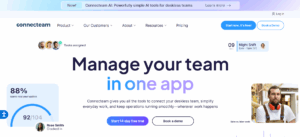
Connecteam is an all-in-one employee app designed for deskless workforce management, combining communication with scheduling and operations.
Key Features
Internal communication with chat and updates.
Shift scheduling, time tracking, and task assignments.
Knowledge base for company resources.
Employee engagement tools like surveys and recognition.
USP
Connecteam differentiates itself as a comprehensive operations and communication tool, making it especially valuable for SMBs.
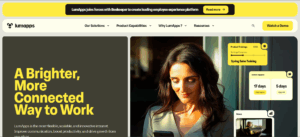
MangoApps is a unified employee experience platform that combines intranet, communications, and collaboration.
Key Features
Modern intranet with customizable hubs.
Company news feed and targeted announcements.
Project collaboration with chat and file sharing.
Recognition, surveys, and engagement features.
USP
MangoApps is unique as an all-in-one digital workplace solution, reducing the need for multiple separate platforms.
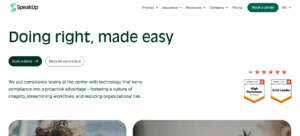
SpeakAp is an employee communication app built for large organizations with distributed teams.
Key Features
Secure messaging and announcements.
Targeted communications by department or role.
Document and media sharing.
Analytics to track message reach and impact.
USP
SpeakAp is especially strong in retail and hospitality, where employees need quick, secure communication channels.
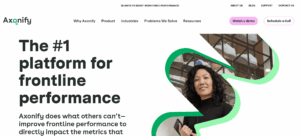
Axonify is a frontline enablement platform with a strong focus on training and learning while supporting communication needs.
Key Features
Microlearning and knowledge reinforcement.
Communication tools for announcements and updates.
Gamification to drive engagement.
Analytics on employee learning and activity.
USP
Axonify’s training-first approach makes it ideal for organizations that need to combine communication with employee learning.
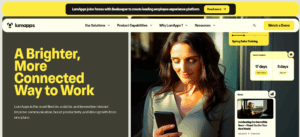
LumApps is an enterprise-grade intranet and communications platform designed to unify employee experience.
Key Features
Personalized intranet portals for employees.
Knowledge sharing and content management.
Engagement analytics.
Integration with Microsoft 365 and Google Workspace.
USP
LumApps excels at knowledge sharing and enterprise intranet capabilities, making it suitable for large organizations with complex structures.
As the workplace becomes more distributed and digital-first, companies need communication platforms that keep employees informed, engaged, and connected. While Joinblink offers strong intranet and communication solutions, alternatives like TheEmployeeApp, Staffbase, Workvivo, Beekeeper, and Connecteam address specific needs ranging from frontline communication to all-in-one digital workplaces.
By carefully evaluating each platform’s features, user experience, and unique strengths, organizations can identify the right solution that not only enhances communication but also strengthens culture, alignment, and productivity. Choosing the right Joinblink alternative in 2025 is more than a technology decision—it’s a strategic move toward building a more connected and engaged workforce.